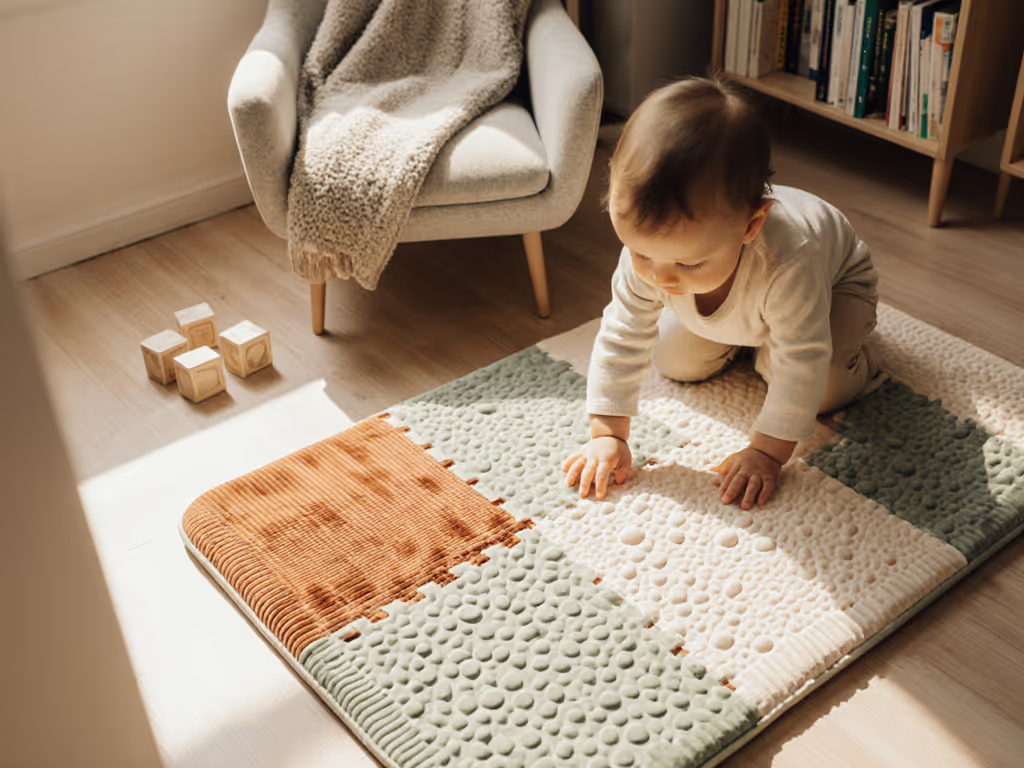
Play Mat Color Psychology: Infant Mood & Visual Tracking Guide

When setting up your baby's play area, you've likely wondered how play mat color psychology impacts development. Research shows color choices directly influence infant visual tracking abilities and emotional states, but not always as marketing suggests. Transparency is a feature, not a vibe or hint. Let's unpack what the evidence reveals about color's role in early development, including overlooked risks of "sensory enrichment" marketing. I'll define key terms plainly, flag unknowns, and focus on actionable choices backed by developmental science.
FAQ: Decoding Color's Role in Play Spaces
How do colors affect infant visual development?
Infants begin life seeing only high-contrast patterns (black/white/yellow). By 2-3 months, they distinguish reds and blues, then greens by 4-5 months. This progression explains why high-contrast mat benefits are most critical for newborns:
- 0-3 months: High-contrast patterns (like black-and-white stripes) boost visual acuity and tracking speed as babies learn to focus
- 3-6 months: Primary colors (red/yellow/blue) stimulate neural pathways for color recognition
- 6+ months: Complex patterns support depth perception and object permanence
Evidence context: A 2016 study in Infant Behavior & Development confirmed infants fixate 40% longer on high-contrast visuals versus muted tones during early visual development stages. However, excessive color complexity too early may overwhelm still-developing visual systems (a nuance rarely acknowledged in product marketing). For a stage-by-stage breakdown of how vision guides color and pattern choices, see our visual development play mat guide.
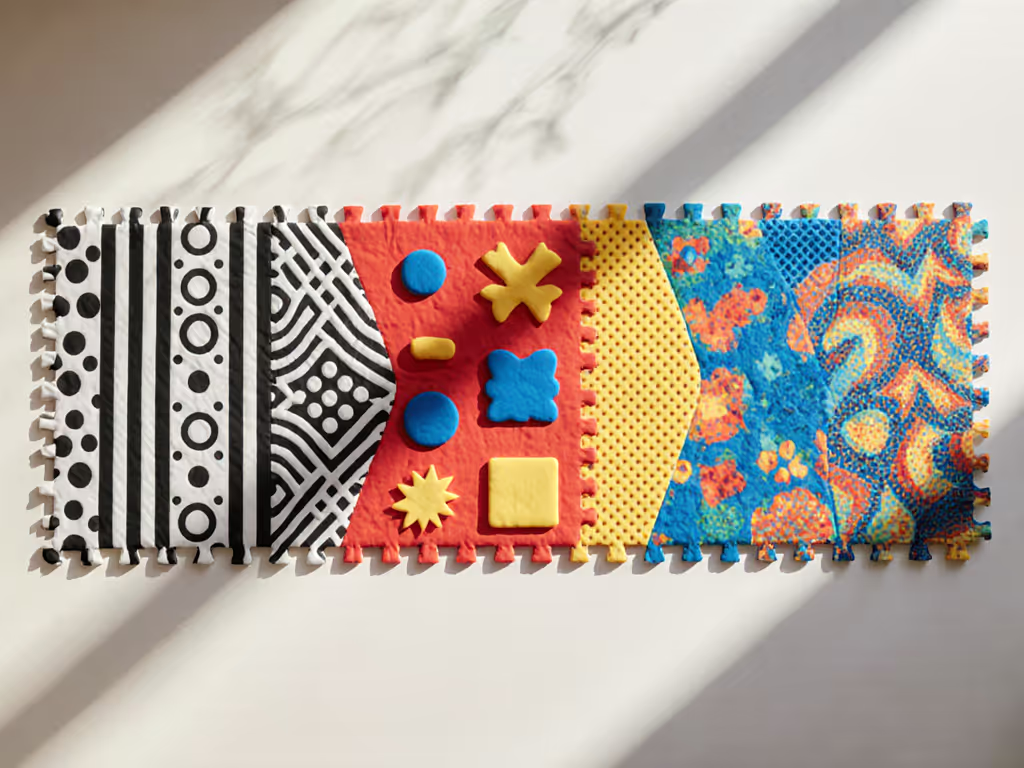
Can play mat colors influence baby mood regulation?
Yes, but with critical caveats. The concept of baby mood regulation colors is oversimplified in mainstream parenting advice. Science shows:
- Cool tones (soft blues/greens): May lower cortisol in some infants during sleep transitions (per AAP sleep guidelines), but effects vary by temperament
- Warm tones (yellows/oranges): Can increase alertness during play, but may overstimulate sensitive babies
- Neutrals (beiges/grays): Provide "visual rest" space for overwhelmed infants
Key limitation: No universal "calming color" exists. Your baby's reaction is individual. Track clues like:
- Increased fidgeting = potential overstimulation
- Prolonged gaze = healthy engagement
- Turning away = need for visual reset
Transparency is a feature: Never assume a "calming play mat hue" is objectively soothing. Request chromaticity data from brands (e.g., CIE Lab* values) to verify color claims. To connect color choices with emotional security, explore our secure base play mat guide.
Do bright colors actually boost cognitive development?
The marketing claim that "bright colors accelerate learning" lacks nuance. While primary colors aid initial color recognition, research reveals downsides:
-
Disruption risk: A 2016 PMC study observed preschoolers made 32% more errors on structured tasks against colorful backgrounds versus neutral surfaces. Similar principles apply to infant play:
- Puzzle mats with competing patterns may fragment attention
- Overly busy visuals can delay cause-effect learning (e.g., "when I bat this toy, it rattles")
-
Developmental mismatch: Highly saturated colors marketed for newborns miss the mark, as babies under 3 months can't distinguish them clearly.
Instead, prioritize developmental color palettes:
- Newborn stage: Black/white geometric patterns
- 3-6 months: Single bold colors against neutral backgrounds
- 6+ months: Grouped color families (e.g., all blues) with defined borders
Why might 'stimulating' mats backfire?
Many parents (myself included) initially believe "more color = more development." But visual clutter creates three hidden risks:
- Attention fragmentation: Infants struggle to focus on toys when background colors compete
- Sensory overload: Especially in neurodivergent babies or those with sensory processing differences
- Tracking impairment: Rapid eye movement (saccading) becomes harder against chaotic patterns (critical for infant visual tracking development)
The research gap: Few studies isolate color impact from other visual elements (pattern complexity, contrast ratio). Until more data exists, adopt a "less is more" approach for floor surfaces while using toys for targeted color exposure.
How to choose a developmentally supportive mat?
Forget "mood-boosting" color promises. Focus on evidence-based selection criteria:
Step 1: Match palette to developmental stage
- 0-3 months: Monochrome with bold black/white contrasts
- 3-6 months: One primary color per quadrant (e.g., red top-left, blue top-right)
- 6+ months: Themed palettes (e.g., "ocean" blues/greens) with clear object separation
Step 2: Prioritize material transparency
Colorants themselves may contain VOCs. Use our non-toxic play mat safety checklist to verify dye certifications and low-VOC claims. Demand:
- OEKO-TEX® Standard 100 certification for dyes (not just base materials)
- Full VOC test reports showing <50 ppb off-gassing (like my early nursery experience where headaches vanished after switching to certified mats)
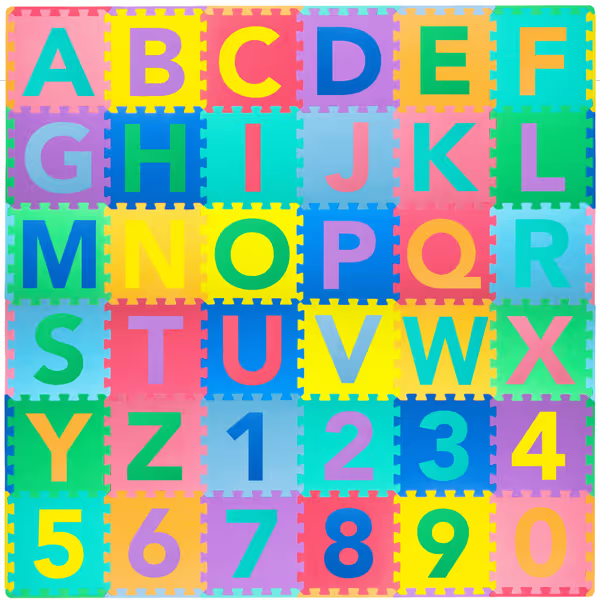
ProSource Kids Puzzle Alphabet & Numbers Mat
Step 3: Balance aesthetics with function
- Avoid edge-to-edge patterns; choose mats with neutral borders
- Opt for reversible designs: high-contrast side for tummy time, calming side for quiet play
- Ensure non-slip backing won't stain hardwoods during color transitions If you have hardwood, carpet, tile, or vinyl, see our flooring compatibility guide for non-slip and stain transfer tips.
Critical unknown: Long-term VOC exposure impacts from colorants remain under-researched. Always request test reports.
The Takeaway: Color as a Tool, Not a Crutch
Play mat color psychology matters, but not in the way ads suggest. Strategic color use supports development when aligned with visual milestones, while chaotic palettes may hinder focus. Your clearest path to confident choices:
Show the test report. Verify dye safety certifications. Track your baby's reactions, not generic claims.
True developmental support comes from observing your child's unique responses to color, paired with materials transparency. When brands openly share dye chemistry data and developmental rationale (not just "happy baby" imagery), they earn trust in an opaque market.
Further exploration
- Search OEKO-TEX® certified baby mats in your preferred retailer
- Consult CDC's developmental milestones to time color complexity
- Request VOC test reports from brands using the phrase "full material disclosure per ISO 12219-3"
Note: Color impact studies focus on typically developing infants. Discuss sensory needs with your pediatrician if your child has diagnosed differences.
Related Articles


Rolling Development Play Mat: Stable Surface Science
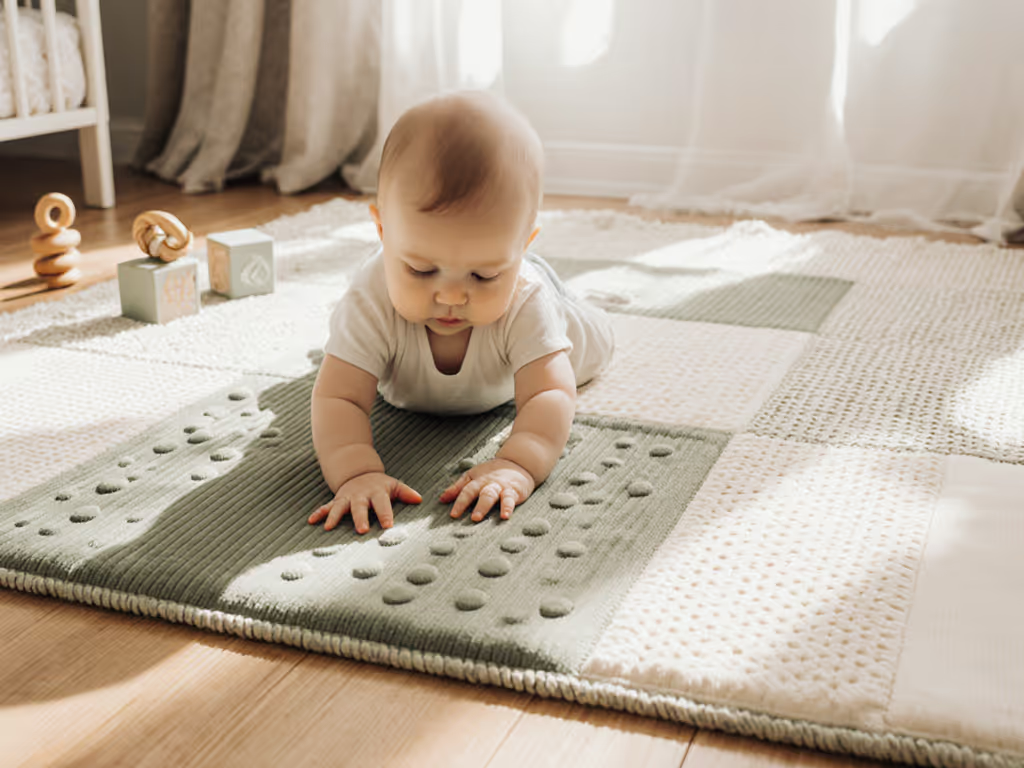
Sensory Texture Play Mat: How Textures Build Infant Tactile Skills
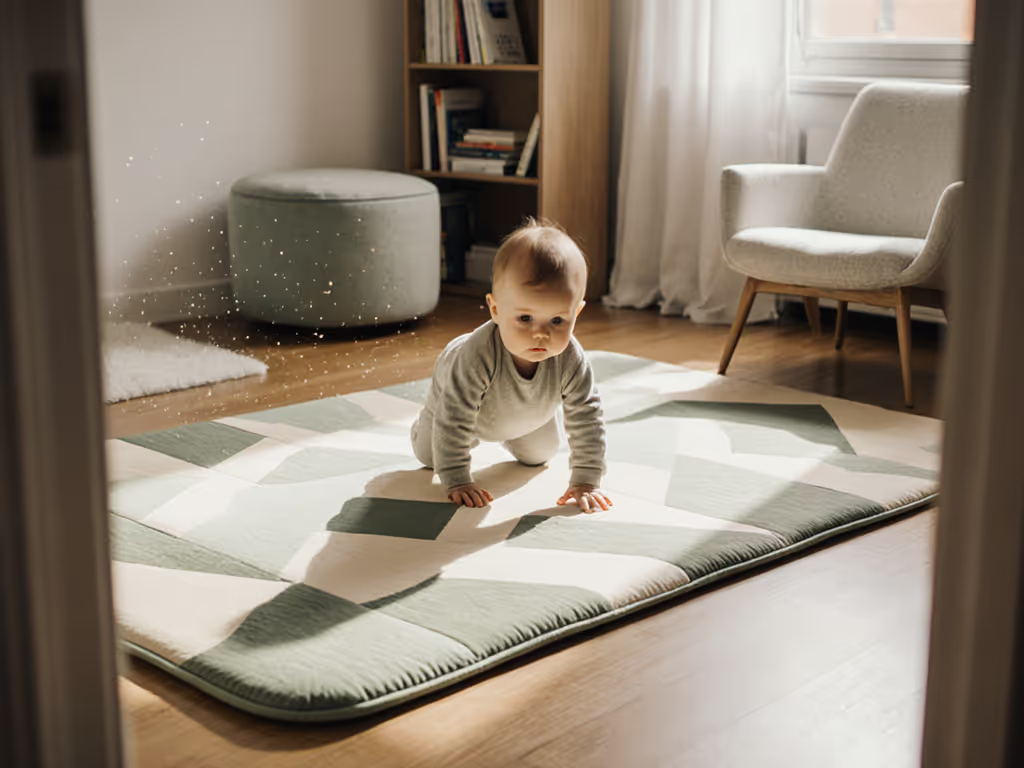
Motor Skill Play Mats: Space-Smart Baby Development Surfaces

